7.2 Users in Microsoft Content Management Server
|
| < Day Day Up > |
|
There are a number of user roles in Microsoft Content Management Server that have appropriate rights to do tasks and access appropriate containers, which are used to store Web site resources.
If you are using Windows 2000, users can automatically be imported into Microsoft Content Management Server every 15 minutes or so after the user logs in on Windows 2000. Therefore, any user with access to your Windows 2000 network is automatically made into a potential Microsoft Content Management Server user. To make better use of this feature, some organizations create a new Windows 2000 domain to manage user access more easily.
The Content Management Server user access rights are summarized in Table 7.1.
| Role | Rights | Containers |
|---|---|---|
| Subscriber |
|
|
| Author |
|
|
| Editor |
|
|
| Moderator |
|
|
| Resource Manager |
|
|
| Template Designer |
|
|
| Administrator |
|
|
7.2.1 Containers
Containers are workspaces or directories where users complete their tasks depending on their appropriate role.
Microsoft Content Management Server containers are
-
Folders-used to store pages
-
Channels-used for postings
-
Galleries-used for templates and resources
Any typical Content Management Server-based site is actually built up from a number of elements, including:
-
Page templates -These allow authors to build Web site pages without writing HTML since the content is written directly into the pages via placeholders. The properties of the placeholders are set by the template designers, who decide what a user can and can't add in a particular place on a page. The authors' menus are changed dynamically to reflect precisely what they can and can't do in a placeholder.
-
Navigation templates -These are used to make site navigation easier for users when the site is being managed through a Web browser. They provide a hierarchy of channels and order of pages added to the channels. In most cases they will also include Help and Home buttons.
-
Postings -Publishing a page in Microsoft Content Management Server is the process of posting it to a channel with a publishing schedule. The publishing schedule will have page expiration dates and channel information. Typically, a page will be expired if, for example, it contains a special offer that only lasts a set time.
-
Folders -Folders are used to store Microsoft Content Management Server pages. Therefore, every channel must have an associated folder. An editor will have one or more folders assigned and is responsible for approving the pages before they are published. If a folder does not have an editor, then any pages submitted to the folder will automatically be published. Likewise, if a folder is used to store pages created by its own editor, then the pages will be autoapproved.
-
Channels -Channels organize postings into a hierarchy and are used to store, organize, and manage access to content. Any content posted to a channel can only be published after a moderator has approved it.
7.2.2 Authoring a Page
Adding content to a page in Microsoft Content Management Server is fairly straightforward. The authoring process is started by a user logging into the Microsoft Content Management Server Site Builder application with a user name and password. An appropriate view will then be created, depending on the user's role within that Web site. The authoring and publishing process is often in a state of flux since a number of users can be making changes at any moment in time-so the site pages are assigned state information to keep track of who is doing what to the various pages.
The state information provided will include the following:
-
New -The page is brand new and being worked on for the first time. It has not been saved before within Microsoft Content Management Server.
-
Saved -The page has been saved to the system, but not submitted for approval.
-
Waiting -The page has been sent for approval, but not approved by the editor.
-
Approved -The page has been approved by an editor.
-
Declined -The page has been turned down by an editor and has not been modified and resubmitted.
-
Expired -The page has been approved, but has expired since the expiration time set on the page is earlier than the current time.
Microsoft Content Management Server uses a basic locking model to ensure that only one user can edit a page or object at a time. Any other users will be able to work with the page or object as read-only.
If a user fails to release the object properly after editing, normally following a client machine being turned off while editing, the object can remain open and locked. To overcome this, Microsoft Content Management Server has a command called 'Kill Lock,' which does exactly as it says and will remove the lock from the object. Obviously, care needs to be exercized with this command because it can corrupt or lose data if used incorrectly.
7.2.3 Template Families
Template families are used to create multiple views of any one page. Every page is based on at least one template, but an author can create a second view of the same page by using a second template. The content of each of the views can have common shared elements or can be different.
7.2.4 Page Editing
If a user has editor rights, he or she can edit, approve, decline, or delete pages submitted to the folders. As part of the approval process, if a page is declined a note can be added explaining why it was declined and giving suggestions for any changes (see Figure 7.4).
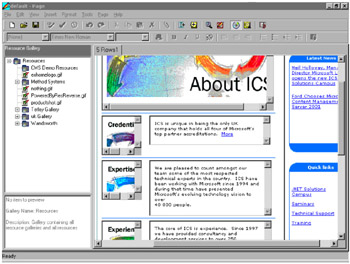
Figure 7.4: Page editing.
7.2.5 Page Revisions and Versioning
Microsoft Content Management Server supports versioning and revisions. Revisions are based on postings, and any changes to a posting are not versioned. But changes of a posting's page, template, or resource gallery can be viewed as revisions of a posting that does use them.
Unapproved pages have the date and time a revision was last modified alongside the page status. Approved revisions have the date and time the revision was approved, the type of the revision, and the name of the person who made the revision. There is also the option to preview and compare the revisions.
Revisions can be stored according to the size of the Microsoft Content Management Server SQL Server database, so there is no hard limit.
There will be a requirement to do some basic database management in SQL Server. Maintenance, such as purging old revisions that you have stored, is a good idea, but be careful about doing this when the system is busy because it may end up locking users out during the clear down.
Common sense would naturally come into play when managing your database, and having access to a SQL Server Database Administrator (DBA) can sometimes be useful.
7.2.6 Resources
Resources are mostly multimedia (i.e., graphics, videos) files that can be added to Web pages by users if they have rights to the resource gallery. Resource managers and administrators have read/write access to the resource galleries, and all other users have read-only access.
The following file types are supported in the resource galleries:
-
GIF
-
JPEG/JPG
-
PNG
-
ASF/ASX (Netshow videos)
-
AVI
-
MPEG/MPG
-
MOV/QT (Quick Time)
Other resource formats can be used, but the file will be displayed as a link/attachment, and there is no guarantee how the file will be displayed or consumed by the browser. For example, a Word document will be viewed as a link, and unless the browser has a Word reader, the user will be prompted to save the file to disk or choose an application to run it.
Browsers that do not support any of the video images may need additional downloaded add-ins.
A useful feature of Microsoft Content Management Server is the ability to generate a dependent report on a resource so that you can see any pages that are consuming the resource and work out the ramifications should you delete it.
Users can also be caught out if they see that a resource is available, but have not refreshed their Site Builder application and so are not aware that, in fact, it has been deleted. To help with this, users should be encouraged to refresh Site Builder on a regular basis, and it may also be a good idea to move resources to another temporary archive for a day or two prior to deletion just to be sure.
7.2.7 Moderators
Moderators have rights to approve or decline postings in their channels. The publication schedule for the view of a page and its channel is set by a posting, so the moderator can decide if appropriate information is going to be published. The moderator actually uses a tool called the Approval Assistant, which returns up to 500 items that are awaiting approval in a search. Here the posting can be previewed in the moderator's browser.
7.2.8 Publishing and Content Delivery
One major benefit with Microsoft Content Management Server is the ability for anyone in an organization to write content for the Web site. Since Microsoft Content Management Server is database driven, all of the Web site content can be called up from the database, assembled on the page, and then displayed to the user. Images, such as logos, just need to be stored once and can then be accessed from numerous Web pages. If the logo is to be changed, it can simply be updated in the database.
Site authors access the usual Web site, but when they log in, they get access to additional menus and publishing tools. Web site editing is carried out in placeholders, which have been created on the page templates, so that anyone can edit text directly or drag-and-drop content, assuming he or she has the appropriate access rights.
7.2.9 Publishing Workflow
The publishing workflow for pages is quite straightforward. Authors use the Web Author tools to create a page and then set the posting or publishing schedule, which then determines when the content can be viewed. A posting will have a publishing schedule with start and expiration dates for a page and information about the channel to be used for publication (see Figure 7.5).
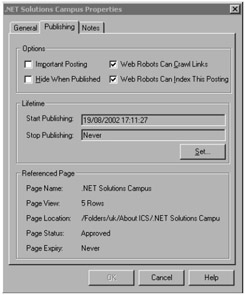
Figure 7.5: Setting publishing attributes.
The channel will have stored the postings into a hierarchy, and when the author says so, the page will be submitted to the editor for approval. The editor then approves the page, and the moderator will then check the content to ensure that it is appropriate for the channel.
The approval process can be based on either one or many individuals approving content that has been submitted.
-
Serial approval is a vertical workflow that requires approval of content at each stage. If an editor fails to approve a page at his or her stage, then the page will never reach the Web site (see Figure 7.6).
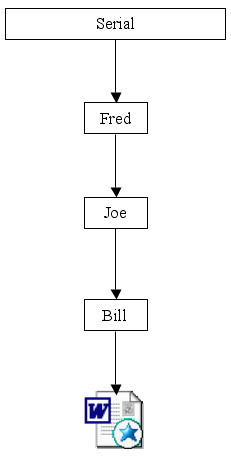
Figure 7.6: Serial approval. -
Parallel single approval allows content to be submitted to a number of approvers, any one of whom is authorised to approve content. Once the content has been approved by this one individual, it will automatically be removed from the other approvers' workload and forwarded to the next stage (see Figure 7.7).
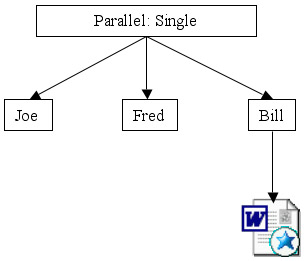
Figure 7.7: Parallel single approval. -
Parallel all approval is an extension of parallel single approval, and in this case all of the approvers would need to approve the content before it moves to the next stage. If any one approver refuses to clear the content, it will not move on to the next stage (see Figure 7.8).
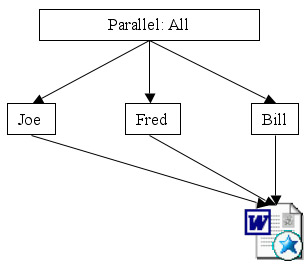
Figure 7.8: Parallel all approval.
Once fully approved, the page's content will be published according to its start and expiration dates. If the expiration date is reached, the content will no longer be published to that channel.
Figure 7.9 illustrates the publishing workflow in Microsoft Content Management Server.
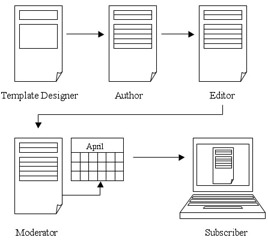
Figure 7.9: Publishing workflow in Microsoft Content Management Server.
It is possible to publish pages consecutively so that you can create a new version of a page to replace an original on a specific date. This might be useful if you have a specific promotion starting on a set date that you wish to advertize on the Web site. Likewise, it is possible to publish channels consecutively.
Additionally, if you have pages that you wish to have published directly by the author without editor or moderator approval, just don't assign an editor to a channel's folder or a moderator to the channel. Microsoft Content Management Server will then autoapprove any postings that are submitted.
|
| < Day Day Up > |
|
EAN: 2147483647
Pages: 136